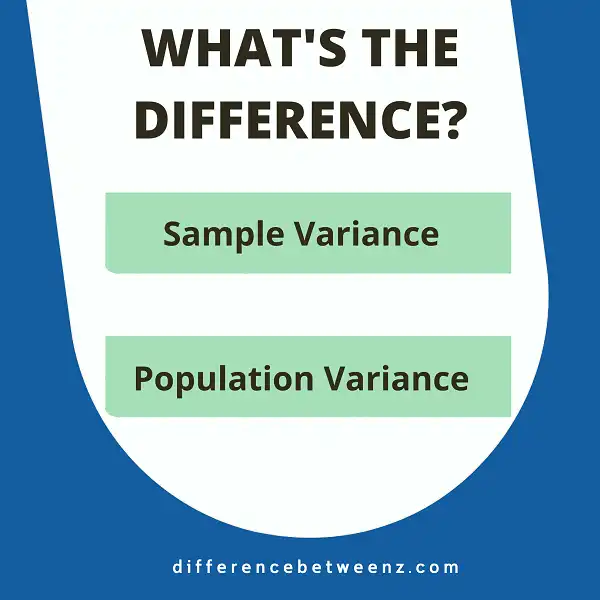When working with statistics, it is important to understand the difference between sample variance and population variance. These two concepts are related, but they are not the same. In this blog post, we will explore the difference between sample variance and population variance and discuss how each can be used in data analysis. We will also provide examples so that you can understand these concepts better. Let’s get started!
What is Sample Variance?
Sample variance is a measure of how to spread out a data set is. Sample variance is calculated by taking the difference between each data point and the mean, squaring the result, and then taking the average of those squared differences. Sample variance can be used to compare different data sets or to track changes in a data set over time. The larger the sample variance, the more spread out the data set is. The smaller the sample variance, the more clustered the data set is. Sample variance can be a useful tool for understanding how data sets are distributed and for identifying outliers.
What is Population Variance?
Population variance is a statistical measure of how spread out a set of data is. It is calculated by taking the square of the difference between each data point and the mean, and then summing all of those values and dividing by the population size.
Population variance can be used to compare sets of data, identify outliers, or understand how well a set of data fits a particular model. For example, if two sets of data have the same population variance, then they are equally spread out; if one set has a higher population variance than another, then it is more spread out.
Population variance can also be used to understand how well a set of data fits a particular model. For example, if a set of data has a high population variance, then it may not fit well with a linear model. Population variance is an important tool for statisticians and data scientists, and it can be used to gain insights into many different types of data sets.
Difference between Sample Variance and Population Variance
Sample variance and population variance are two types of statistical measures that are used to calculate the variance of a data set.
- Sample variance is used to calculate the variance of a sample, while population variance is used to calculate the variance of a population.
- The difference between sample variance and population variance is that sample variance is calculated using only a sample of the data set, while population variance is calculated using the entire data set.
- Sample variance is typically used when the data set is too large to calculate the population variance.
Additionally, population variance is more accurate than sample variance because it uses all of the data points in the calculation.
Conclusion
\In conclusion, the difference between sample variance and population variance is that the population variance takes into account all of the data in a given population, while the sample variance only considers a sample of that data. This distinction is important when calculating variances for different types of data sets. When working with samples, it is important to use the appropriate sampling method to calculate the correct variance.


